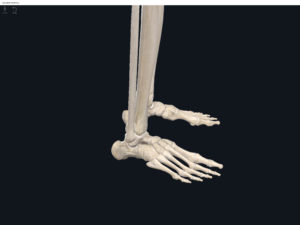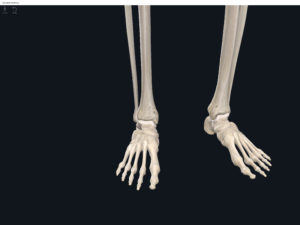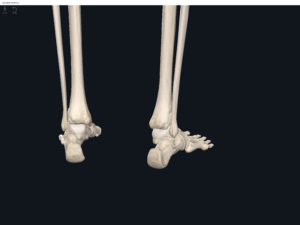Anatomy & Physiology: Bones—Foot and Ankle.
Structure.
- Tarsus: the ankle; proximally located. Consists of: talus (ankle bone); calcaneous (heel bone, largest and strongest of the tarsal bones); navicular (medial, forms the “platform” for the 3 cuneiform bones); cuneiform (x3, lateral, intermediate, medial); cuboid (lateral, cube-shaped).
- Metatarsals: intermediate region of the foot and numbered I-V starting with the great toe (hallux as I). Articulate with cuboid and cuneiforms.
- Phalanges: proximal, middle and distal; 3 phalanges per toe except for the great toe (hallux) which only has 2. Phalanges are numbered medial to lateral starting with 1 at the great toe.
Function.
Clinical Significance.
References
Biel, A. (2015). Trail guide to the body: A hands-on guide to locating muscles, bones and more.
Cedars-Sinai. (2018). Vertebrae of the spine. Retrieved from https://www.cedars-sinai.org/health-library/diseases-and-conditions/v/vertebrae-of-the-spine.html
Jenkins, G., & Tortora, G. J. (2012). Anatomy and Physiology: From Science to Life, 3rd Edition International Stu. John Wiley & Sons.
Muscolino, J. E. (2017). The muscular system manual: The skeletal muscles of the human body.





